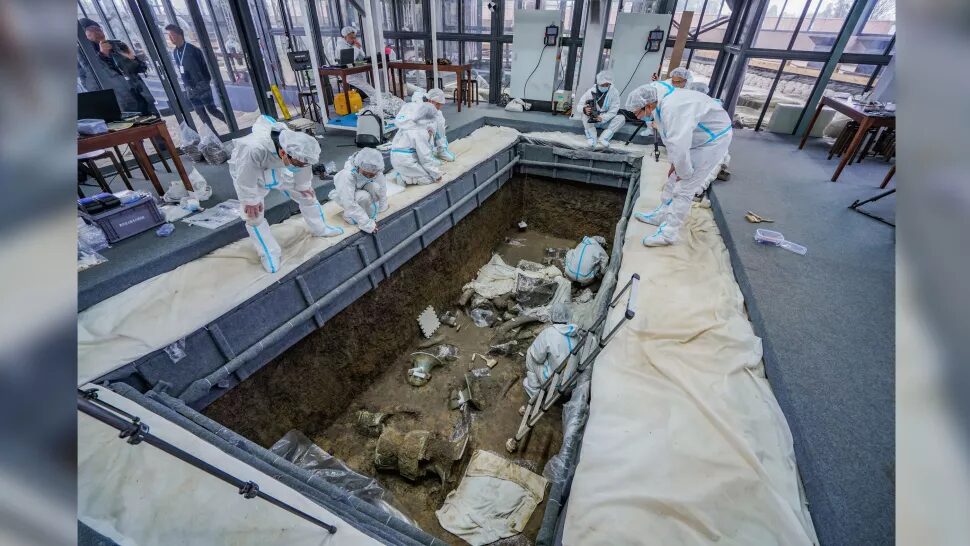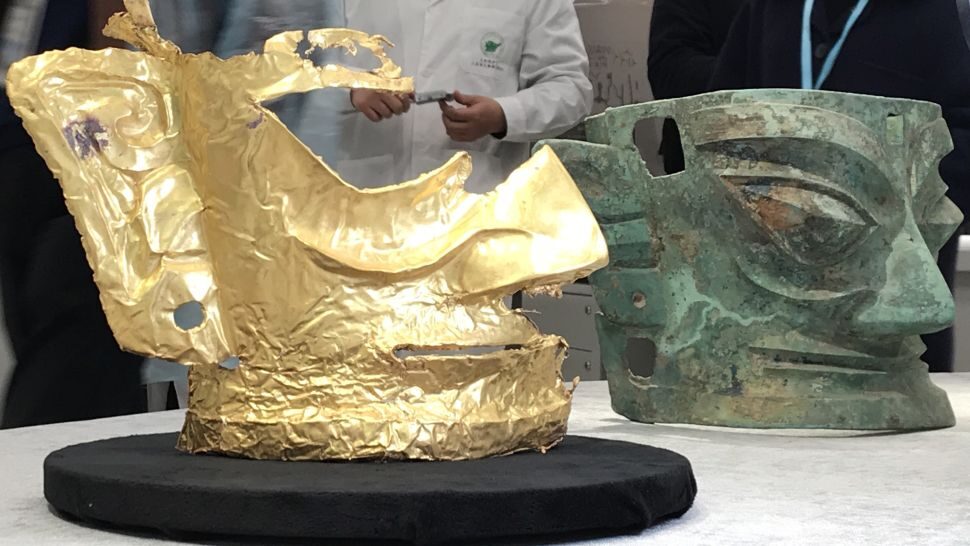
The site is located about 930 miles (1,500 kilometers) southwest of Beijing, Xinhua, China's state-run press agency, reported.
The artifacts date back around 3,000 years, to a time when the ancient kingdom of Shu ruled this part of China. In addition to the masks, the archaeologists uncovered bronze artifacts with dragon and cow engravings, miniature ivory sculptures, silk, carbonized rice (rice that has turned into carbon) and tree seeds, Xinhua reported.
"Surprisingly, we have unearthed some never-heard-of-before bronze ware items," Lei Yu, an archaeologist with the Sichuan Provincial Cultural Relics and Archaeology Research Institute, told Xinhua. "For instance, some large and delicate bronze ware items have bizarre-looking dragon or cow designs on them."
The researchers haven't turned up any human remains in the pits, and they don't know what function the pits may have served.
Even so, the discovery of the six pits may provide clues about the rituals the people of the Shu kingdom practiced at that time.

A local farmer in Guanghan accidentally discovered the Sanxingdui site in 1929, when he came across a pit of jade artifacts. But the site didn't gain fame among archaeologists until 1986, when they found two 3,200-year-old pits containing thousands of artifacts.
Those pits, which are located next to the newfound ones, also were devoid of human remains, and scholars have debated what the pits were used for, Chen Shen, a senior curator of Chinese art and culture at the Royal Ontario Museum in Toronto, wrote in his book Anyang and Sanxingdui: Unveiling the Mysteries of Ancient Chinese Civilizations (Royal Ontario Museum, 2002).
"Some believe the pits to be a kind of burial, but without human skeletons; the body might have been reduced to ash as a result of a ritual burning ceremony," Shen wrote in his book. Another possibility is that the pits may be related to political changes that were going on in the region; Shen noted that people were slowly abandoning the site of Sanxingdui around 3,000 years ago. While the site slowly became abandoned, the Shu kingdom lived on until it was conquered by another state called Qin in 316 B.C.
Excavation of the six newly discovered pits and analysis of the artifacts found in them are ongoing. Few textual sources discussing what happened at that time survive, making it more challenging to determine what the pits were used for.



[Link]
Not much better in Brazil
[Link]
.